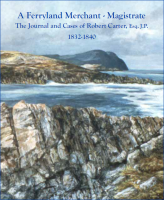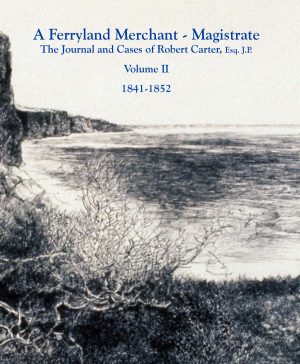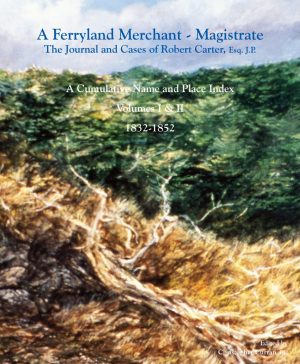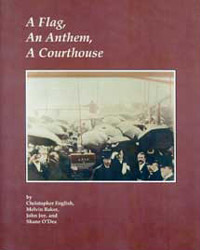



The SS Daisy Legal History Committee is a committee of the Law Society of Newfoundland and Labrador whose mandate is the preservation of Newfoundland and Labrador’s legal heritage, including the history of law, the courts, the lawyers and the Law Society. The name of the committee is taken from the government boat SS Daisy that carried lawyers, judges, sheriffs and clerks to the courts in smaller communities in pre-1949 Newfoundland.
The SS Daisy Legal History Committee works to date include taping and transcribing oral histories of senior members of the Bench and Bar, preserving the Barrister’s Roll which dates from 1826, and publishing the last volume of the Newfoundland Law Reports.
Showing 1–4 of 22 results

Robert Carter served as Magistrate in Ferryland at a pivotal point in Newfoundland’s history: the tumultuous period from the grant of representative government in 1832 to the emergence of responsible government in 1855. His journal offers an unrivalled picture, over a sustained period of 21 years, of life in this important Newfoundland outport community throughout almost the entirety of this formative period. When combined with his cases in Ferryland’s Court of General and Quarter Sessions during this time, what emerges is an incomparably rich picture of a vibrant 19th century Newfoundland community. B & W and colour illustrations, a glossary of terms, biographical profiles, the 1840 Ferryland District Voters’ List, and a select bibliography supplement the text.
Add to cart
Professor Jerry Bannister of Dalhousie University writes in his Introduction to Volume II:
“With the publication of Volume Two of the journal of Robert Carter, the Law Society of Newfoundland and Labrador has made a wonderful contribution to our knowledge of the province’s history and culture. As with Volume One, the editors have done an outstanding job in producing a book that is at once scholarly and accessible to the general reader. By publishing an unabridged version of the journal up to 1852, they have given us the remarkable ability to trace Carter’s life and career longitudinally and to make direct comparisons across different eras in the history of Newfoundland and Labrador. This is no small feat, and we are all in their debt. My advice to readers is simple: plunge in and immerse yourself in a world that is at once foreign and familiar, though keep in mind the Law Society is not responsible for hours lost in pleasurable reading.” This volume, in two parts, completes the documentary record of Robert Carter’s diary and Court cases for the entirety of the 21 years of his diary, 1832-1852, begun in Volume I. The text is accompanied by: B & W and full colour illustrations, the transcribed text of the two Reports of the Commissioners adapting the Criminal Law of England to the Colony, the “Rough Copy file” of Carter’s cases 1848-1852, the Ferryland District Voters’ List 1847, a glossary of terms, biographical profiles and a select bibliography.

The third volume of A Ferryland Merchant-Magistrate, this cumulative name and place index is intended to make Carter’s record of this period in Newfoundland’s social, economic, and political development accessible to the general reader and the research community.
Robert Carter served as Magistrate in Ferryland at a pivotal point in Newfoundland’s history: the tumultuous period from the grant of representative government in 1832 to the emergence of responsible government in 1855. His journal offers an unrivalled picture, over a sustained period of 21 years, of life in this Newfoundland outport community throughout almost the entirety of this formative period. His journals and cases provide invaluable insight into the role of the magistracy as an institution in helping shape community life at the local level.
Add to cart
People often give voice to their identity by constructing public monuments which express pride in past achievements and signal future hopes and intentions. This urge towards self-definition was especially marked in St. John’s at the turn of the century…Public buildings, memorial crosses, a flag, a national anthem, a trans-island railway, and modernized harbours expressed a complementary self-awareness. Their creators wished to present themselves as confident, progressive, and modern yet solid, responsible, and alert to the debt preceding generations. Illustrations throughout.
Add to cart